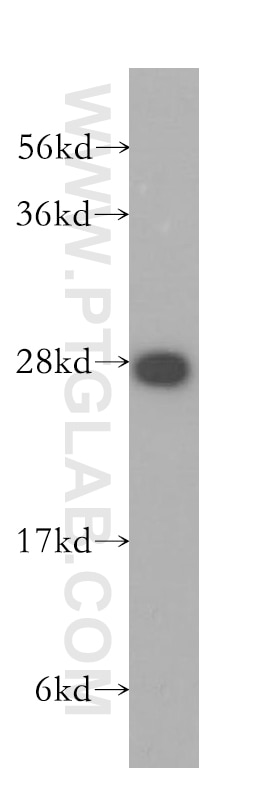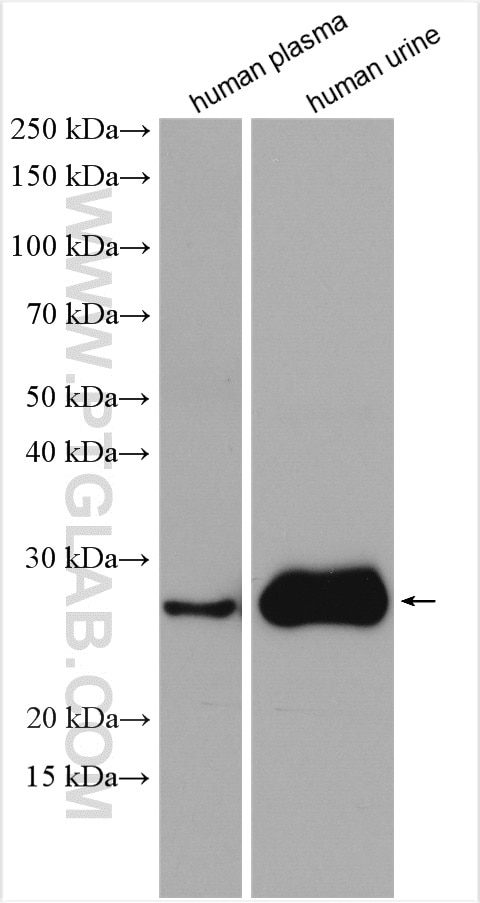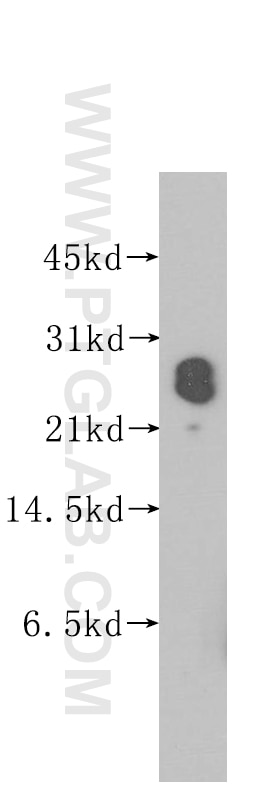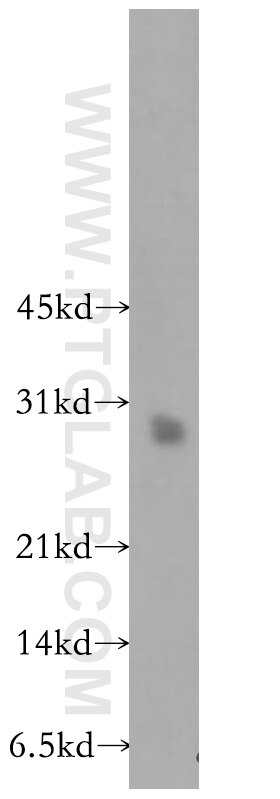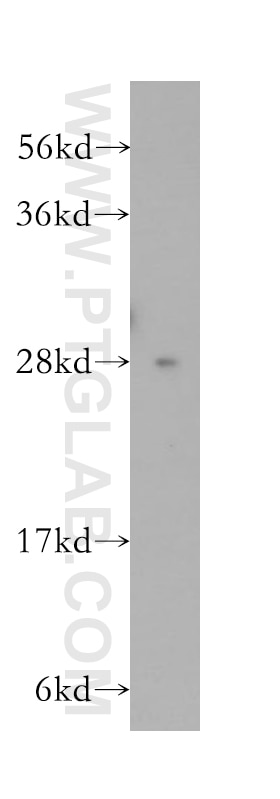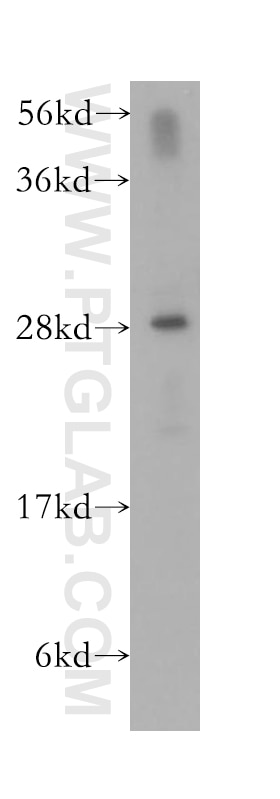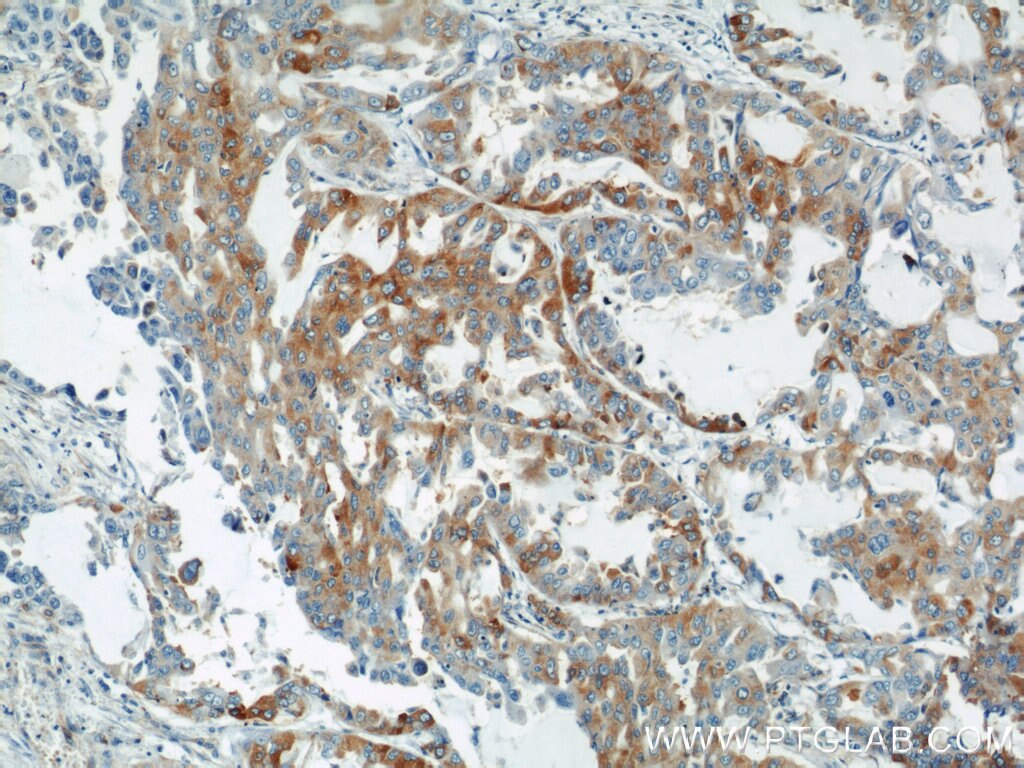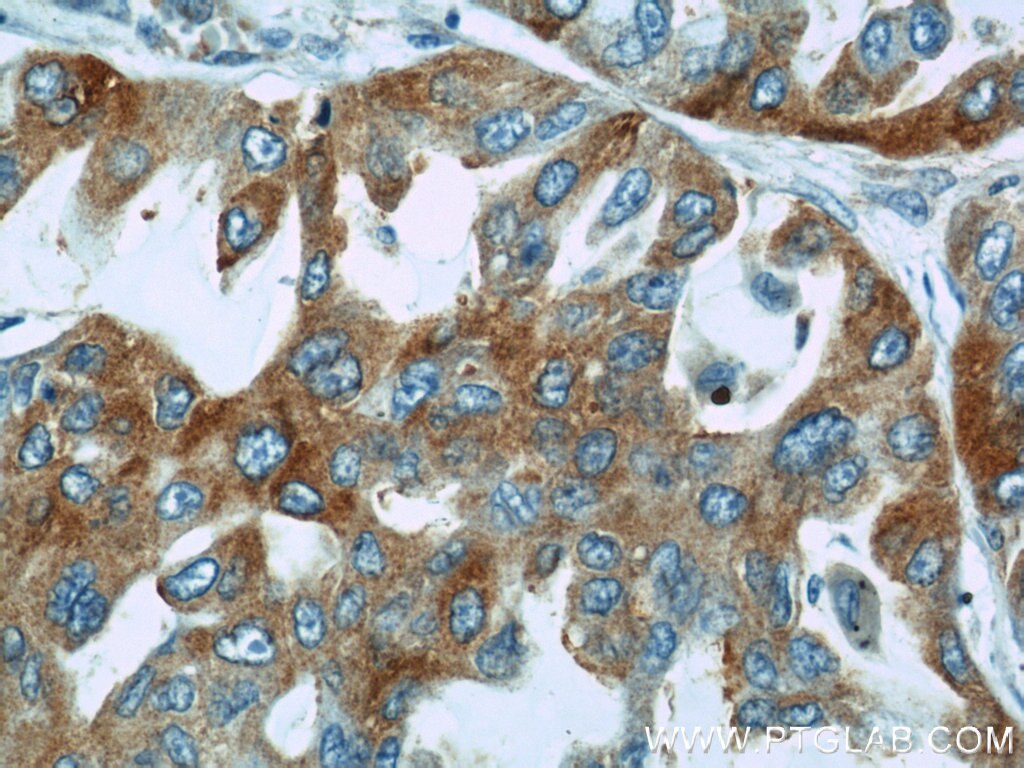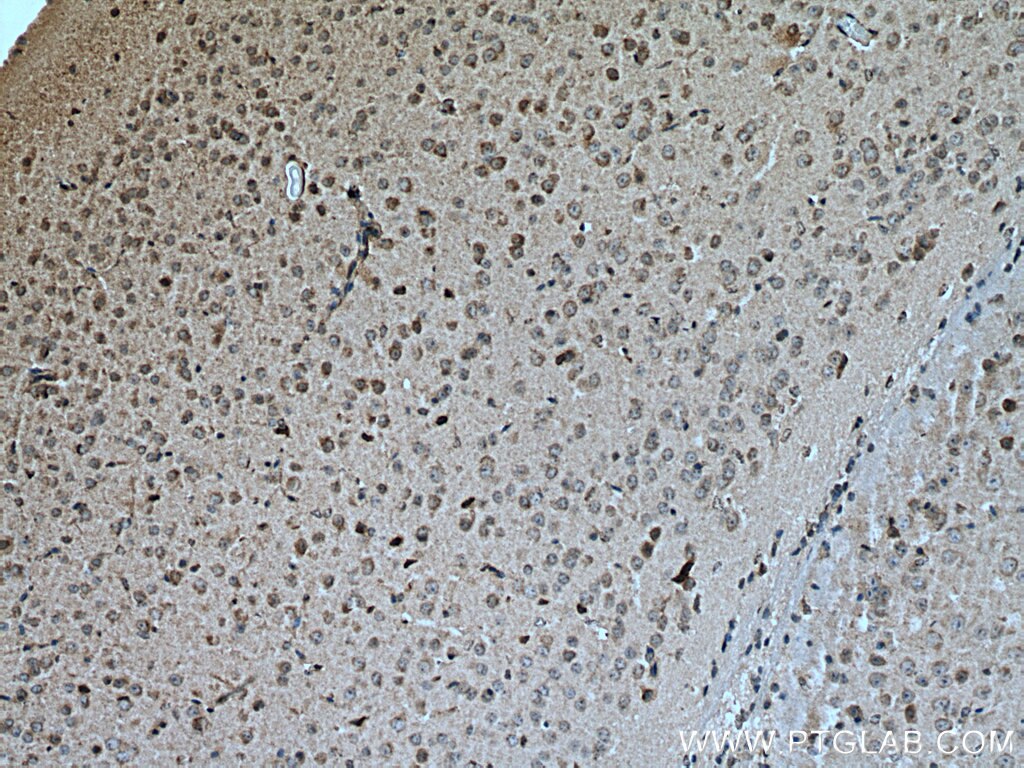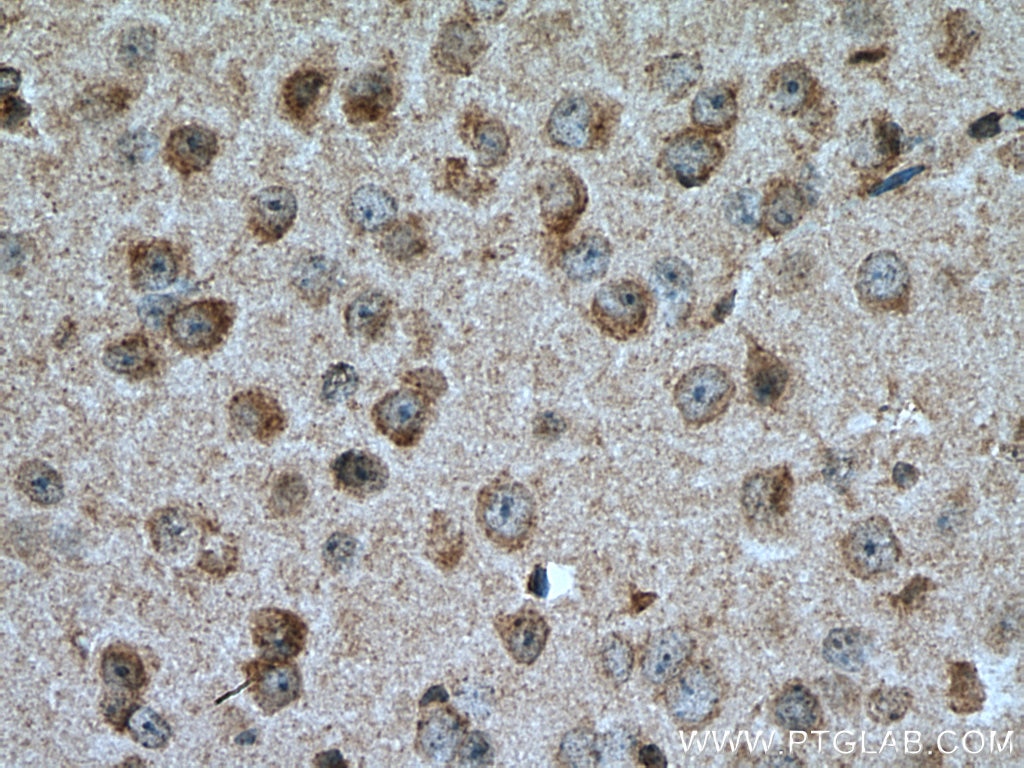Anticorps Polyclonal de lapin anti-PTGDS
PTGDS Polyclonal Antibody for WB, IHC, ELISA
Hôte / Isotype
Lapin / IgG
Réactivité testée
Humain, souris et plus (1)
Applications
WB, IHC, ELISA
Conjugaison
Non conjugué
N° de cat : 10754-2-AP
Synonymes
Galerie de données de validation
Applications testées
| Résultats positifs en WB | cellules HeLa, cellules PC-3, plasma humain, tissu cardiaque humain, tissu de côlon humain, tissu rénal humain, tissu urinaire humain |
| Résultats positifs en IHC | tissu cérébral de souris, tissu de cancer du poumon humain il est suggéré de démasquer l'antigène avec un tampon de TE buffer pH 9.0; (*) À défaut, 'le démasquage de l'antigène peut être 'effectué avec un tampon citrate pH 6,0. |
Dilution recommandée
| Application | Dilution |
|---|---|
| Western Blot (WB) | WB : 1:1000-1:3000 |
| Immunohistochimie (IHC) | IHC : 1:250-1:1000 |
| It is recommended that this reagent should be titrated in each testing system to obtain optimal results. | |
| Sample-dependent, check data in validation data gallery | |
Applications publiées
| WB | See 5 publications below |
| IHC | See 3 publications below |
Informations sur le produit
10754-2-AP cible PTGDS dans les applications de WB, IHC, ELISA et montre une réactivité avec des échantillons Humain, souris
| Réactivité | Humain, souris |
| Réactivité citée | Humain, porc, souris |
| Hôte / Isotype | Lapin / IgG |
| Clonalité | Polyclonal |
| Type | Anticorps |
| Immunogène | PTGDS Protéine recombinante Ag1163 |
| Nom complet | prostaglandin D2 synthase 21kDa (brain) |
| Masse moléculaire calculée | 21 kDa |
| Poids moléculaire observé | 28 kDa |
| Numéro d’acquisition GenBank | BC005939 |
| Symbole du gène | PTGDS |
| Identification du gène (NCBI) | 5730 |
| Conjugaison | Non conjugué |
| Forme | Liquide |
| Méthode de purification | Purification par affinité contre l'antigène |
| Tampon de stockage | PBS avec azoture de sodium à 0,02 % et glycérol à 50 % pH 7,3 |
| Conditions de stockage | Stocker à -20°C. Stable pendant un an après l'expédition. L'aliquotage n'est pas nécessaire pour le stockage à -20oC Les 20ul contiennent 0,1% de BSA. |
Informations générales
PGDS(Prostaglandin-H2 D-isomerase) is also named as PTGDS, PDS, PGDS2. It catalyzes the conversion of PGH2 to PGD2, and is a prostaglandin involved in smooth muscle contraction/relaxation and a potent inhibitor of platelet aggregation. It has two N-glycosylation recognition sites.
Protocole
| Product Specific Protocols | |
|---|---|
| WB protocol for PTGDS antibody 10754-2-AP | Download protocol |
| IHC protocol for PTGDS antibody 10754-2-AP | Download protocol |
| Standard Protocols | |
|---|---|
| Click here to view our Standard Protocols |
Publications
| Species | Application | Title |
|---|---|---|
Int J Mol Sci Zileuton, a 5-Lipoxygenase Inhibitor, Attenuates Haemolysate-Induced BV-2 Cell Activation by Suppressing the MyD88/NF-κB Pathway. | ||
Front Cell Dev Biol Comparative Proteomics and Phosphoproteomics Analysis Reveal the Possible Breed Difference in Yorkshire and Duroc Boar Spermatozoa. | ||
Cell Cycle MicroRNA-138 improves LPS-induced trophoblast dysfunction through targeting RELA and NF-κB signaling. | ||
Cancer Manag Res Decreased PTGDS Expression Predicting Poor Survival of Endometrial Cancer by Integrating Weighted Gene Co-Expression Network Analysis and Immunohistochemical Validation. | ||
Med Sci Monit Proteome analysis of human cerebrospinal fluid as a diagnostic biomarker in patients with meningioma. | ||
Mol Neurodegener MLKL deficiency alleviates neuroinflammation and motor deficits in the α-synuclein transgenic mouse model of Parkinson's disease |
